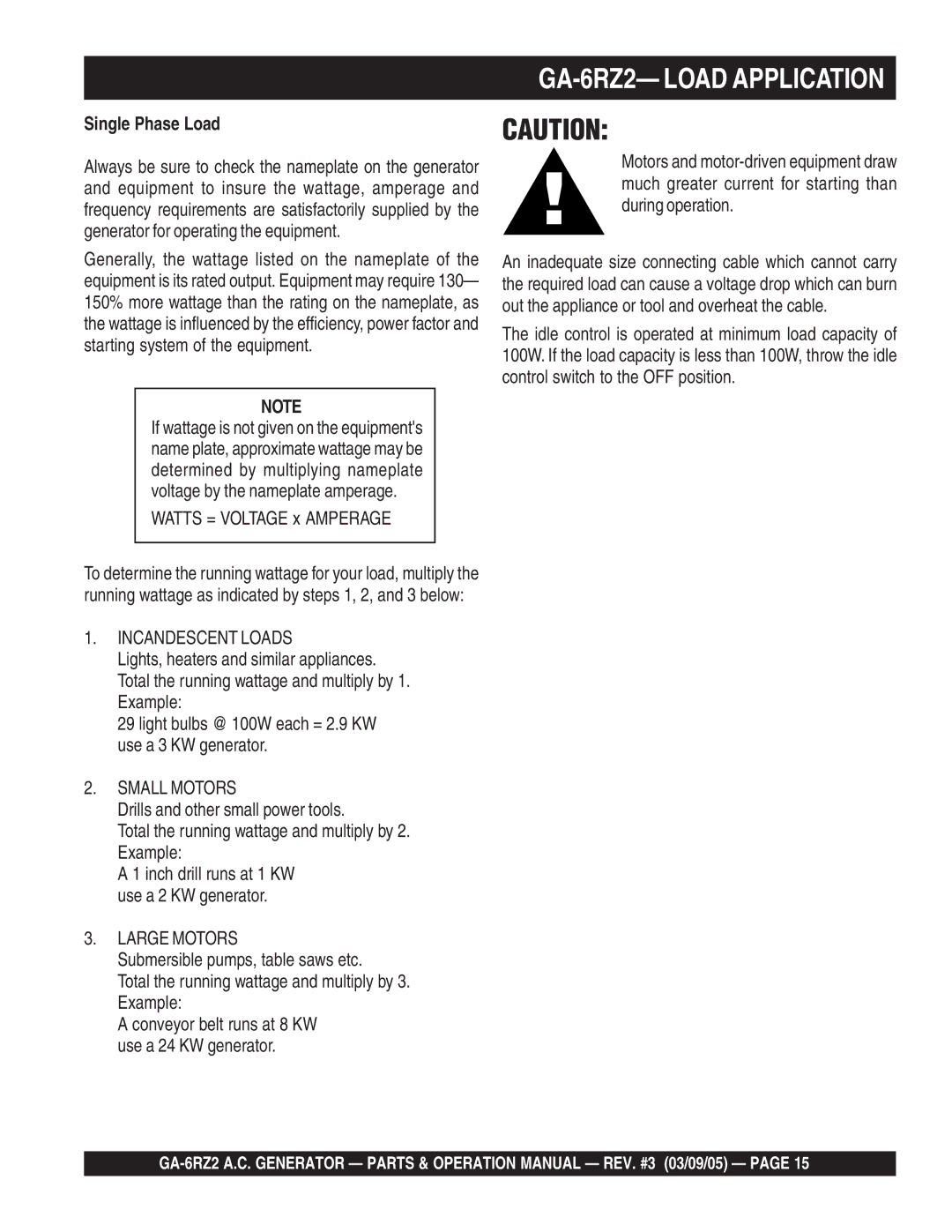
Single Phase Load
Always be sure to check the nameplate on the generator and equipment to insure the wattage, amperage and frequency requirements are satisfactorily supplied by the generator for operating the equipment.
Generally, the wattage listed on the nameplate of the equipment is its rated output. Equipment may require 130— 150% more wattage than the rating on the nameplate, as the wattage is influenced by the efficiency, power factor and starting system of the equipment.
NOTE
If wattage is not given on the equipment's name plate, approximate wattage may be determined by multiplying nameplate voltage by the nameplate amperage.
WATTS = VOLTAGE x AMPERAGE
To determine the running wattage for your load, multiply the running wattage as indicated by steps 1, 2, and 3 below:
1.INCANDESCENT LOADS
Lights, heaters and similar appliances. Total the running wattage and multiply by 1. Example:
29 light bulbs @ 100W each = 2.9 KW use a 3 KW generator.
2.SMALL MOTORS
Drills and other small power tools.
Total the running wattage and multiply by 2. Example:
A 1 inch drill runs at 1 KW use a 2 KW generator.
3.LARGE MOTORS
Submersible pumps, table saws etc.
Total the running wattage and multiply by 3. Example:
A conveyor belt runs at 8 KW use a 24 KW generator.
GA-6RZ2— LOAD APPLICATION
CAUTION:
Motors and
An inadequate size connecting cable which cannot carry the required load can cause a voltage drop which can burn out the appliance or tool and overheat the cable.
The idle control is operated at minimum load capacity of 100W. If the load capacity is less than 100W, throw the idle control switch to the OFF position.
